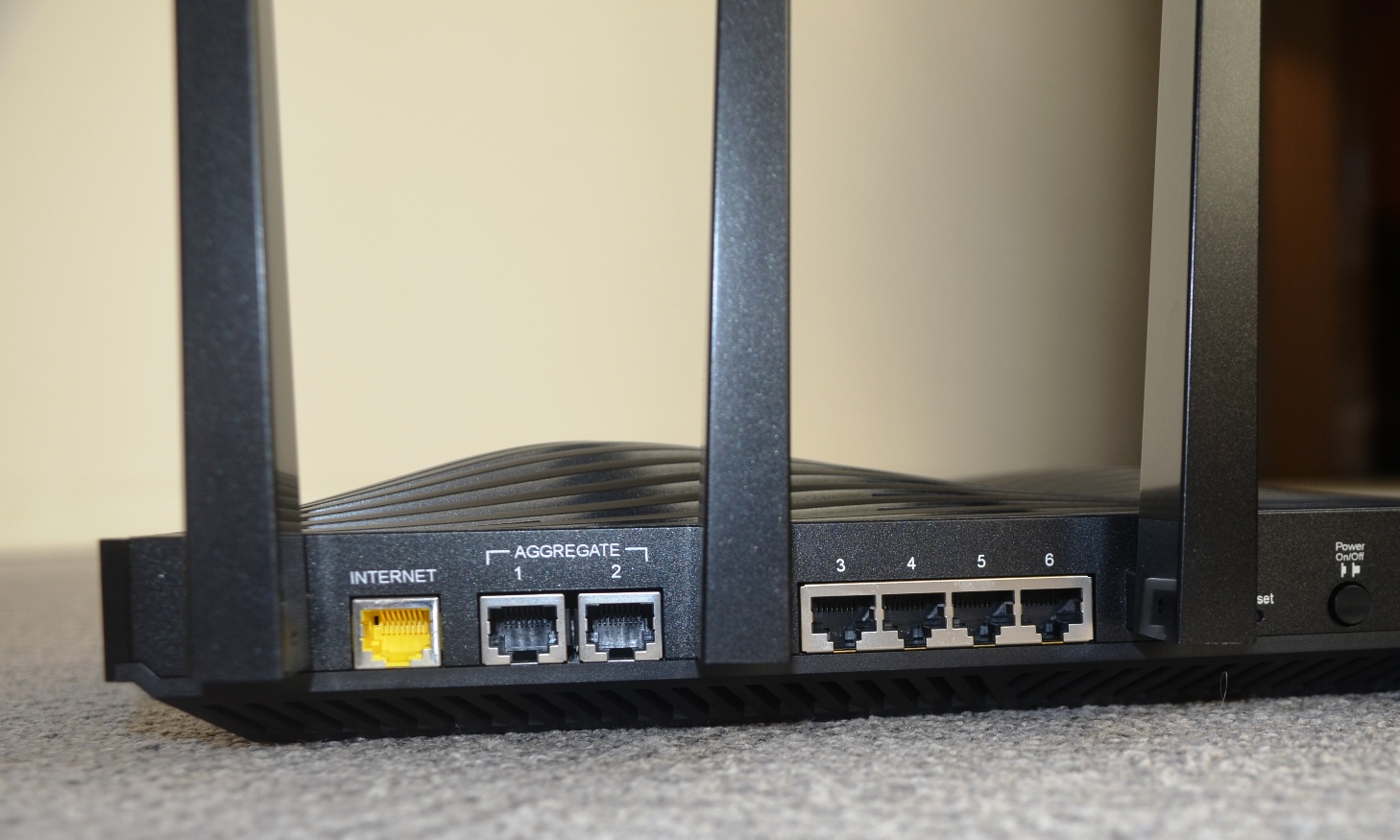

There’s also a pair of USB ports, one 3.0, and one 2.0.

The final two are a pair of aggregated ports, mostly for increased bandwidth to high-end NAS solutions. One is for Internet into the router, and four are traditional LAN ports. The X8 offers a total of seven Gigabit Ethernet ports. Netgear’s Nighthawk X8 is a serious piece of hardware, and it needs space to do its best work. It’s not going to fit on the back of the shelf the printer sits on, nor will it slide easily between devices in a home theater cabinet. That means finding a bit of space for the device is necessary. The bumps make sure nothing can be laid flat on the router. Were the surface of the device flat, you might be inclined to stack a device on top of it, like a cable modem or a game console. They’re hard to describe, but they serve an important purpose. The top of the device isn’t flat, but instead broken up by two large bumps. Despite its size, its simple black design is modern enough to fit in with any home theater, or advanced network gear. It’s so large it would look right at home with the equipment used to communicate with the Mars rover. The massive box is three times the size of the standard home router, and has four thick plastic antennas that stick straight up off the back. Can the X8 keep a steady course in the rough waters of stormy network demands, or is it a shipwreck waiting to happen? Large and in charge It has beamforming and MU-MIMO it’s a DLNA and FTP server it can run VPN utilities and it offers security features like DoS protection and a built-in firewall.Īll of that functionality doesn’t come cheap, and the Nighthawk X8’s $400 price tag is going to be an immediate turn-off for a lot of users.

The Nighthawk X8 is packed with almost every feature imaginable in a router. The 802.11ac router is capable of 5.3Gbps of total Wi-Fi bandwidth across three channels, and it doesn’t stop there. Netgear’s Nighthawk line has always gone above and beyond in network performance, and the new X8 is no exception. Sure, there are routers like Google’s OnHub that make the process easy, and provide excellent coverage, but in particular for gaming, there’s a thin line between optimum performance and crushing defeat. A slow network has the power to bring even the highest-end PC to a crawl, and troubleshooting a wireless network is a vague and frustrating process. The router is an oft-overlooked part of a home computing setup.


 0 kommentar(er)
0 kommentar(er)
